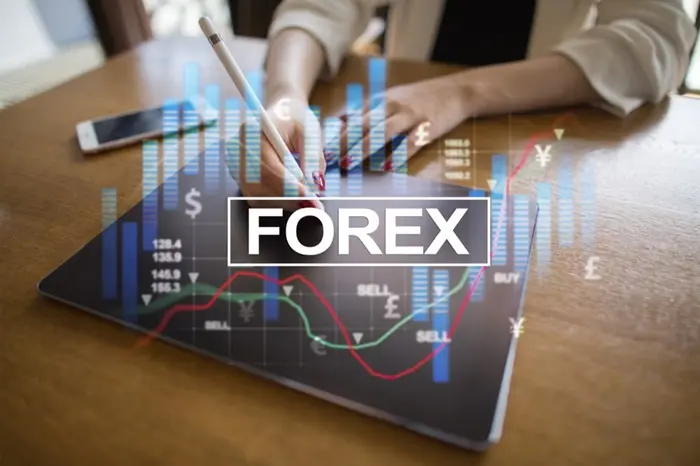Forex trading, also known as foreign exchange trading or currency trading, is the global market for buying and selling currencies. With a daily trading volume of over $6 trillion, forex is one of the largest and most dynamic financial markets in the world. For those new to forex, this can seem overwhelming. However, with the right knowledge, tools, and strategies, anyone can effectively trade forex. In this guide, we’ll explore everything you need to know to get started with forex trading.
Learn the Basics of Forex Trading
Forex trading involves exchanging one currency for another with the goal of profiting from exchange rate fluctuations. Currencies are traded in pairs, such as EUR/USD, GBP/USD, or USD/JPY. Each currency pair consists of a base currency and a quote currency. When you buy a currency pair, you buy the base currency and sell the quote currency; when you sell the pair, you sell the quote currency and buy the base currency.
The forex market is decentralized, meaning there is no central exchange. Instead, currencies are traded directly between participants, including banks, financial institutions, governments, and individual traders. This creates a liquid, accessible market.
How Forex Trading Works
To understand how Forex trading works, let’s take a closer look at the mechanics:
Currency Pairs: In Forex, currencies are always traded in pairs. The first currency in the pair is known as the base currency, while the second is the quote currency. For example, in the EUR/USD pair, the EUR is the base currency, and USD is the quote currency.
Price Movements: The price of a currency pair indicates how much of the quote currency is needed to purchase one unit of the base currency. For example, if the EUR/USD pair is quoted at 1.2000, it means that one euro is worth 1.20 US dollars.
Leverage: One of the key features of Forex trading is the ability to use leverage. Leverage allows traders to control a larger position with a smaller amount of capital. While leverage can amplify profits, it also increases the risk of losses.
Spread: The spread is the difference between the bid price (the price at which you can sell) and the ask price (the price at which you can buy). The spread is a cost that traders must consider when entering or exiting a position.
Steps to Start Trading Forex
Starting your journey in Forex trading requires preparation, education, and the right mindset. Here are the steps to follow:
1. Choose a Reliable Forex Broker
The first step in Forex trading is to choose a reliable and regulated broker. A Forex broker acts as an intermediary between you and the market, executing your buy and sell orders. When selecting a broker, consider factors such as:
Regulation: Ensure that the broker is regulated by a reputable financial authority, such as the FCA (Financial Conduct Authority) or NFA (National Futures Association).
Trading Platforms: A good broker will provide access to user-friendly and advanced trading platforms, such as MetaTrader 4 or 5.
Fees and Spreads: Look for a broker with competitive spreads and low transaction fees to minimize your trading costs.
Customer Support: Ensure that the broker offers responsive and accessible customer support to assist you when needed.
2. Open a Demo Account
Before risking real money, it’s essential to practice trading on a demo account. A demo account allows you to trade in a simulated environment with virtual funds. This gives you the opportunity to familiarize yourself with the trading platform, test strategies, and gain confidence without financial risk.
3. Learn Technical and Fundamental Analysis
Successful Forex trading relies on two main types of analysis: technical analysis and fundamental analysis.
Technical Analysis
Technical analysis involves studying price charts and patterns to predict future price movements. It relies on historical price data and various technical indicators, such as:
Moving Averages: These indicators smooth out price data to identify trends.
Support and Resistance Levels: These levels indicate price points where the market tends to reverse or stall.
Candlestick Patterns: These patterns can help predict market sentiment and potential price reversals.
Fundamental Analysis
Fundamental analysis involves evaluating economic and political factors that can influence currency values. This includes factors such as interest rates, inflation, GDP growth, and geopolitical events. By understanding the broader economic environment, you can make informed decisions about which currencies to trade.
4. Develop a Trading Strategy
Having a clear and structured trading strategy is crucial for success in Forex. A trading strategy should define:
Entry and Exit Points: Determine when you will enter and exit trades based on your analysis.
Risk Management: Set clear risk management rules, such as stop-loss orders and position sizing, to protect your capital.
Timeframes: Decide on your preferred timeframes for trading, whether you prefer short-term (day trading) or long-term (swing trading) strategies.
A trading strategy should also include realistic profit targets and risk-reward ratios. Never risk more than you are willing to lose.
5. Manage Your Risk
Risk management is a crucial aspect of Forex trading. The high leverage available in Forex can amplify both profits and losses. To protect yourself from significant losses, consider the following risk management techniques:
Stop-Loss Orders: A stop-loss order automatically closes your position when the price reaches a certain level. This helps to limit losses in case the market moves against you.
Position Sizing: Proper position sizing ensures that you do not risk too much of your capital on a single trade. A general rule is to risk no more than 1-2% of your trading capital on any one trade.
Diversification: Avoid concentrating all your trades in a single currency pair or market. Spread your risk by trading multiple pairs or markets.
6. Monitor the Markets and News
To stay informed, you must keep track of global events and economic indicators that can affect the Forex market. Key economic reports, such as the Non-Farm Payrolls (NFP) in the U.S. or the European Central Bank (ECB) interest rate decision, can cause significant price movements.
By using a combination of technical and fundamental analysis, you can stay ahead of the curve and make more informed trading decisions.
7. Keep a Trading Journal
A trading journal is a valuable tool for tracking your progress and identifying areas for improvement. Record each trade, including the reasoning behind it, the strategy used, the outcome, and any lessons learned. Over time, this journal will help you refine your approach and improve your performance.
Key Forex Trading Concepts
To excel in Forex trading, it is important to understand the following key concepts:
Leverage and Margin
Leverage allows traders to control larger positions with less capital. For example, with 100:1 leverage, you can control $100,000 with only $1,000. However, while leverage amplifies potential profits, it also increases the risk of large losses. It is important to use leverage with caution.
Margin is the amount of money required to open and maintain a leveraged position. It is important to monitor your margin level to ensure that you do not get into a margin call, where your broker requires you to add funds to cover losses.
Pip and Lot
Pip (percentile) is the smallest unit of price movement in the Forex market. For most currency pairs, one pip represents a change in the fourth decimal place. For example, if EUR/USD changes from 1.2000 to 1.2001, it has moved one pip.
Lot is the standard unit of Forex trading. The most common lot sizes are as follows:
Standard lot: 100,000 base currency units
Mini lot: 10,000 base currency units
Micro lot: 1,000 base currency units
Understanding pip values and lot sizes is essential to calculating profit and loss.
Forex Trading Psychology
Trading psychology plays a major role in the success of Forex trading. The ability to control emotions such as fear and greed is essential to being consistently profitable. Emotional trading leads to impulsive decisions, which often result in losses.
Develop a disciplined mindset, follow your trading plan, strictly adhere to risk management rules, and don’t chase losses. Accept that losses are part of trading and focus on the long-term goal of achieving consistent profits.
Conclusion
Forex trading is an exciting and rewarding career, but it requires learning, practice, and discipline. You can improve your chances of success by understanding the market basics, choosing a reliable broker, developing a solid trading strategy, and managing risk effectively.
Forex trading is not a get-rich-quick business. It takes time, patience, and continuous learning. Keep practicing with a demo account, perfecting your strategy, and staying up to date with global economic developments. Over time, with perseverance and dedication, you will be able to become a successful forex trader.
Related topics:



































